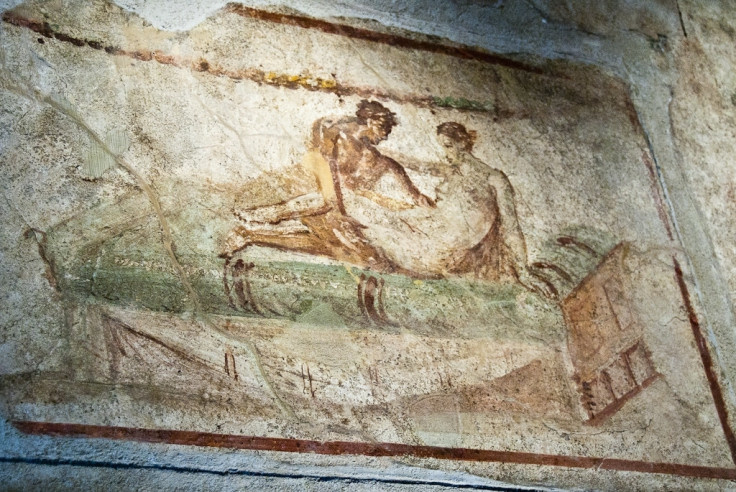The secret lives of Ancient Roman sex workers uncovered in Pompeii graffiti
Men would pay for sexual services out of respect for their wives.

Everyone knows how the people of Pompeii died: They were buried under several waves of incandescent lava spurting from the Mount Vesuvius eruption of 79 AD.
However, ever since it was discovered in 1748, excavations at the Pompeii site have offered some valuable insight into how the people of the Roman city lived.
Picturesque frescoes exhumed in several buildings believed to have been brothels depict exotic and beautiful women serving young clients. The murals were used to arouse clients and even acted as guides for inexperienced patrons - ancient cheat-sheets for the men to refer to.
However, the sex workers' lives were very different from that portrayed in the glamorous murals, writes Classics professor Marguerite Johnson.
One brothel - called the Lupanar - was discovered in the 19th century but closed to the public. It only reopened in 2006.
One look at the building structure gives clues as to how the women lived and worked. The murals depict them in the nude - or with an occasional breast band - lying on comfortable long chairs adorned with cushions and rich fabric. But the rudimentary cells that were discovered at the brothel tell another story.
The cells, Johnson suggests, were most likely where the courtesans entertained their clients. The cells were extremely small - offering barely enough space to contain a bed carved in the wall. There might have been wooden beds as well, but those would have disappeared during the eruption of Mount Vesuvius with the rest of the furniture.
The cells did not have a solid door but were probably separated from the corridor by curtains. Their windows - when they had any - were small and provided little light and air.
Sex workers were slaves, which explains the poor conditions they worked and lived in. Neither their owners - pimps - nor the rest of the city would care for their wellbeing, as slaves were treated as property in ancient Rome.
The prostitutes would live closed off from the outside world and have no distractions. Researchers believe the women would have had to dye their hair blonde in order to be more exotic and appealing.
Male sex workers also existed although not for the pleasure of women, who were only meant to entertain sexual relationships with their husbands. It is possible some wealthy women would get male prostitutes but the main clients were other men.
However, Johnson notes that some sexual practices between sex slaves and men were prohibited: free men couldn't be submissive, for instance.
Sex worker reviews
In addition to the excavations in the brothels, graffiti carved on walls around the city offered insights on how the sex trade of Pompeii worked. The graffiti was a mix of sexual advice, referrals to specific prices or techniques and "reviews" of sex workers' performances. For instance, one reads "Thrust slowly," while another states: "Euplia sucks for five dollars" - the rate is a rough conversion of "asses", the currency used in Pompeii.
Johnson writes that it was common practice for men to visit sex workers in ancient Italy. Wives were only of use for procreation. Out of respect for their spouses, the husbands would rather pay for sex, which was legal. However, adultery - free of charge - was forbidden.
The graffiti provides information about the kind of services the prostitutes would offer, sometimes in a graphic manner. Johnson also notes that men could ask sex workers for sexual practices that could not be performed by respectable women, such as anal sex or fellatio.
Brothels allowed for men to experiment with their sexuality while preserving their good reputations and served as a "type of social and moral policing of the institution of marriage", she says.
Pompeii was wiped out by the eruption of Vesuvius although the 25 metres of lava covering its remains has protected the ruins from the ravages of time.






















